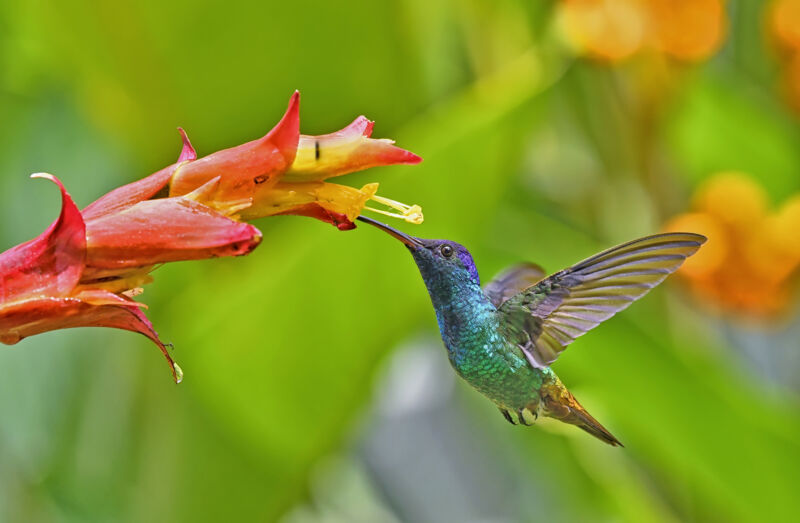
Everyone loves to watch hummingbirds—tiny, brightly colored blurs that dart about, hovering at flowers and pugnaciously defending their ownership of a feeder.
But to the scientists who study them, hummingbirds offer much more than an entertaining spectacle. Their small size and blazing metabolism mean they live life on a knife-edge, sometimes needing to shut down their bodies almost completely just to conserve enough energy to survive the night—or to migrate thousands of miles, at times across open ocean.
Their nectar-rich diet leads to blood-sugar levels that would put a person in a coma. And their zipping, zooming flight sometimes generates g-forces high enough to make a fighter pilot black out. The more researchers look, the more surprises lurk within those tiny bodies, the smallest in the avian world.
“They’re the only bird in the world that can fly upside down and backwards,” says Holly Ernest, a conservation ecologist with the University of Wyoming. “They drink pure sugar and don’t die of diabetes.”
Ernest is one of a small number of researchers studying how hummingbirds cope with the extreme demands of their lifestyles. Here’s some of what scientists have learned about the unique adaptations of hummingbirds.
Put in the work
For years, most researchers had assumed that hummingbirds spent only about 30 percent of their day engaged in the energy-intensive business of flitting from flower to flower and guzzling nectar, while resting most of the other time. But when physiological ecologist Anusha Shankar looked closely, she found they’re often working a lot harder than that.
Shankar, now of the Tata Institute of Fundamental Research in Hyderabad, India, tried to figure out how broad-billed hummingbirds in Southern Arizona spend their days. Using a mix of experimental methods, she measured the birds’ metabolic rate during various activities and estimated their total daily energy expenditure. Adding in previous published data, Shankar was able to calculate the per-minute energy cost of perching, flying and hovering—basically a bird’s three options for spending time.
She then inferred how much time the birds must have spent feeding versus perching over the course of a day.
“We ended up finding that it’s super variable,” Shankar says. During the early part of the summer when flowers are abundant, birds could meet their daily energy needs with as little as a few hours of feeding, spending as much as 70 percent of the day just perching, she found. But when flowers became scarcer after the arrival of the summer monsoon rains, birds at one site perched just 20 percent of the time and used the rest of the day for feeding.
“That’s 13 hours a day!” Shankar says. “There’s no way I can spend 13 hours a day running. I don’t know how they do it.”
Seriously chill
Hummingbirds have a trick to help them eke out their energy reserves: When a bird is in danger of running out of energy, it may go torpid at night, dropping its body temperature nearly to that of the surrounding air—sometimes just a few degrees above freezing. While in torpor, the bird appears almost comatose, unable to respond quickly to stimuli, and breathing only intermittently. The strategy can save up to 95 percent of hourly metabolic costs during cold nights, Shankar has calculated. That can be essential after days when a bird has fed less than usual, such as after a thunderstorm. It also helps birds save energy to pack on fat before migration.
Shankar is now studying which parts of their physiology hummingbirds prioritize during torpor, by looking to see which gene products they can’t do without. “If you’re a hummingbird functioning at 10 percent of your normal metabolism, what is that 10 percent that’s keeping you alive?” she asks.





















+ There are no comments
Add yours